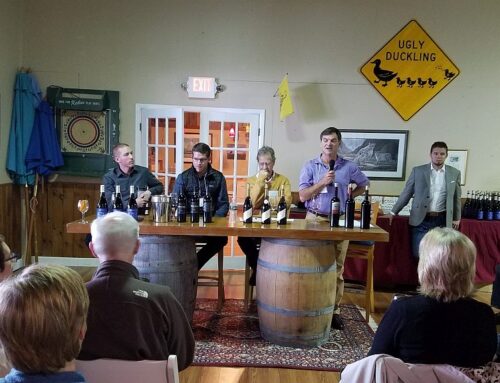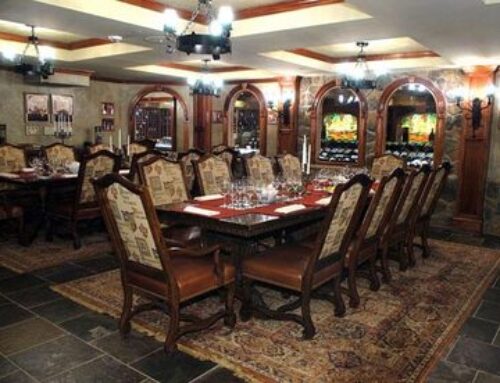New Jersey wines are like Rodney Dangerfield: They get no respect. But a recent tasting of 18 red wines from 17 wineries showed that the quality has taken a giant leap forward during the past two decades.
Some wines were made from grapes with French origins such as merlot, cabernet sauvignon, syrah and petit verdot; others were from less prestigious grapes like chambourcin, a hybrid of French and North American origin planted in France’s Loire Valley and northeastern America. Italy’s sangiovese grape appeared in one of our recommended wines too. Yet the one wine we each ranked in our top five wines was made from a little-known North American grape, cynthiana.
Cabernet sauvignon, merlot and cabernet franc are grown in Bordeaux, France; California, Australia, Chile, and other vineyard areas of the world. But soil, climate, and winemaking yield different wines. And this is true for New Jersey’s wines made from these varieties. I was struck by how these bordeaux grape varieties yielded a burgundy-like structure and taste profile when grown in the Garden State. Absent is the tannic attack of some California and Washington State wines, and thankfully missing is the 14.5 to 15.5-percent alcohol inhabiting many of those wines.
New Jersey’s wines have a soft texture supported by acidity, with spicy aromas and red berry and plum flavors, and the alcohol level was consistently within a percentage point of 12.5-percent. This structure is akin to many Burgundy, Oregon and New Zealand pinot noir wines.
All of us liked the 2006 Cynthiana from Renault Winery, located in Egg Harbor. This wine is made from 100-percent cynthiana grapes. Cynthiana, also called Norton, is grown on the property and was used as a blending grape until winemaker Marco Bucchi made the first Cynthiana wine in 2006. It has pleasing blackberry and spice aromas and tasty plumlike fruit. Add its good length and balance, and we had every reason to make it one of our top five wines.
Fellow connoisseur Susanne Lerescu’s favorite wine was the 2007 Unionville Red Montage Big O. Cameron Stark, educated at America’s premier wine school, University of California at Davis, made the wine from a blend of cabernet sauvignon and cabernet franc. “It reminded me of a big Italian wine from northern Italy,” Lerescu says. “I thought it would be very good with food, and I liked the subtle smoky aroma.”
Gary Borntrager, another wine collector, and I selected Amalthea Cellars Europa III as our top wine. In 1976, Louis Caracciolo planted his first vines at his Atco farm with the idea of creating European-styled wines. The back label says that Caracciolo modeled the Europe III on Bordeaux’s acclaimed Château Lascombes with a blend of 55-percent cabernet sauvignon, 40-percent merlot, and 5-percent cabernet franc. “It is richer than the other wines, and its good acidity keeps the palate fresh making it food friendly,” Borntrager says. I was won by its mix of cherry, strawberry and spice aromas and flavors. I thought it was a perfect example of how the bordeaux grape varieties yield a pinot noir profile in New Jersey’s climate and soil.
Chambourcin is a grape wine lovers should explore. Its structure is rooted in the Rhone, and its flavor and aromas remind me of burgundy. Laurita winery in New Egypt had a delightful chambourcin; its mix of plum and cherrylike fruit flavors would satisfy any Côtes du Rhône drinker in a Paris bistro. The soft tannins and mild acidity made me think of some red wines I enjoyed while traveling in France’s Languedoc region in July.
Lerescu and Borntrager praised Alba Vineyard’s chambourcin. The winery, in a barn dating to 1805, is in the village of Finesville, near Milford. The oldest section of the barn contains the tasting room and the Musconetcong Art Gallery. “This wine really surprised me; it had the style of an Old World wine, like a pinot noir from Europe,” Lerescu says.
At the end of the tasting, we were converts to New Jersey wines. “I’ve changed my mind completely,” Lerescu says. “This tasting has turned me 180 degrees about New Jersey wines.”



Leave A Comment